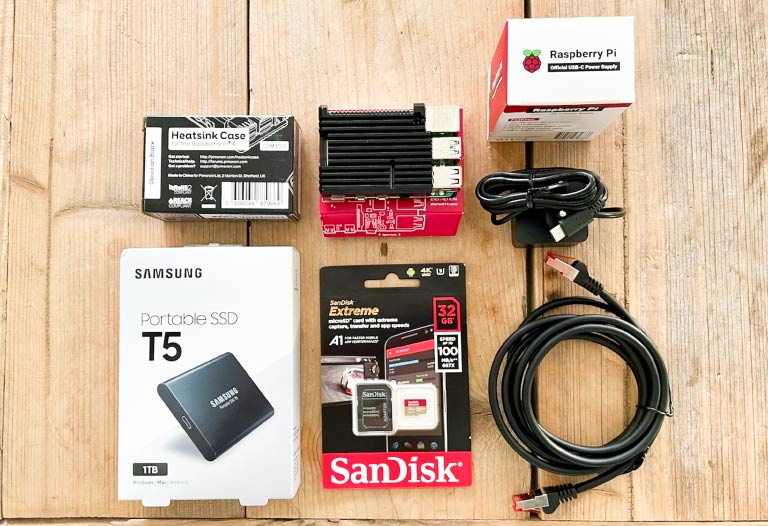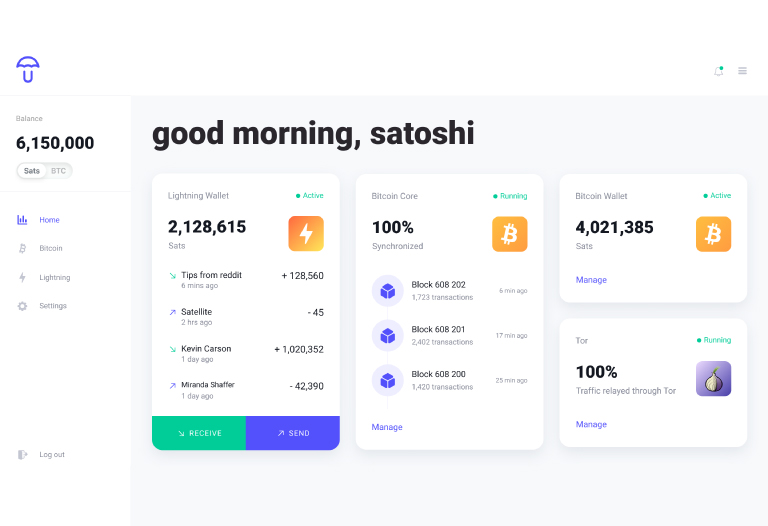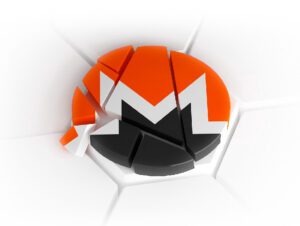
Table of Contents
ToggleIn recent years running Bitcoin nodes has become a cult of decentralization and individual sovereignty. The user experience has improved from using simple software like Bitcoin Core to having specially dedicated operating systems for it.
In this article we will explain, in brief, the advantages of having a node and how to set up your own node, specifically using Umbrel OS.
Why set up your node?
A node is basically a computer that makes up the Bitcoin P2P network and verifies its information (transactions and blocks). The only way to use Bitcoin is through a node, since it is the node that transmits the transactions and confirms that they have been included in the blockchain.
This is why, first of all, running your own node allows you not to rely on third parties. In other words, if you have Bitcoin and you don’t have a node, you don’t know for sure if you really have them! You will have to trust that the company behind the wallet is telling the truth.
With a node no one can censor a transaction (except the miners), because you have control of the transactions you transmit over the network. You also improve privacy because no one will be able to link your bitcoins to an IP address, or know that they belong to the same person.
In addition, in some node set ups, such as Umbrel’s, you have a Lightning Network node included with tools to manage your money. With Lightning you can make micropayments in Bitcoin and even generate monetary benefits if you are a good liquidity provider.
And finally, it is a good experience to get familiar with how Bitcoin and Lightning work by allowing you to experiment.
Hardware requirements
In our case we are going to explain how to use the Umbrel node operating system. The hardware recommended by Umbrel itself is:
-
- Raspberry Pi 4
- SSD 1TB
- MicroSD over 16 GB
- Official Raspberry power supply
- Ethernet cable
- Casing (the coolest one you can find)
The Raspberry will be connected to the wifi Router via Ethernet cable to have access to the Internet, to the SSD to store the blockchain, to a plug with the power supply and will have inside its slot the microSD card with the Umbrel OS operating system.
The Raspberry is basically a mini-computer that, in this case, will be dedicated to verify the Bitcoin blockchain in real time. In general, Bitcoin nodes remain operational 24 hours a day, although it is not necessary if your purpose is to verify incoming transactions. You can, for example, use the node only when you need to verify information. In case you also operate with Lightning Network, it will be necessary to leave it on 24/7.
How much does a Bitcoin node cost?
If you want to know the price of a bitcoin node, we could estimate that it is currently approximately 250 dollars (210 euros). This may vary depending on the components you choose to make up your node and, to this, you must add the cost of monthly electricity in your country.

Umbrel OS: the operating system
On the Umbrel website you can find all the installation steps, which are very simple. There you will find the button to download the Umbrel operating system, which will run the Raspberry Pi.
On a computer, you will have to use Balena Etcher (a software) to flash the microSD with Umbrel OS (how to “introduce” that operating system to it). With a microSD card reader, you will connect it to the computer and simply follow the Balena steps (choose the card, choose the Umbrel OS and flash).
Once this is done, the only thing left to do is to connect each element to the raspberry (including the microSD flashed with Umbrel OS).
Access to your node
Since the Raspberry has no display, the node’s user interface is accessible through any device connected to the Wifi or local network such as a smartphone or laptop.
After 5 minutes on, the node can be accessed through the browser. There are two ways to log in. You can search for http://umbrel.local or, if it does not direct you to the page, search the browser for the IP address of the Raspberry.
The IP address of the devices connected to your Wifi (among which is the Raspberry) can be seen on the Router page of your home (usually accessible by searching 192.168.1.1, 192.168.0.1 or 192.168 in the browser, and using the password of your Router to enter). In any case a simple googling on how to access the router may make things clearer.
Once inside, a local Bitcoin wallet will be generated (inside the node), you will be asked for a password and that’s it!

Initial Blockchain Download
When you enter the user interface it will start downloading the blockchain from the genesis block. This process can be tedious as you have to download and verify all transactions since 2009, more than 350 GB of blockchain.
The first blocks will be verified quickly as they contain hardly any transactions, but as we go through 2016 blocks the progress will be slower.
After a few days, you will have the entire Bitcoin blockchain independently verified by your own node. You will also be able to use Lightning Network and other applications that you can download from an app store. In the wallet part you will see the option to connect wallets to the node and start to stop relying on third parties.
It is very important not to turn off the node abruptly, especially if you have funds in Lightning, as there could be data corruption. The way to turn off the node is in the option that you will find in the interface.
Updates and bugs
Since the Umbrel community is active, you will have updates available from time to time with new features.
Because this is a semi-experimental project you may encounter bugs or problems, in that case you can ask for help through the Spanish or English Telegram groups and they will be happy to help you. For this reason it is not recommended to deposit a lot of money in the local wallet.
Conclusions
Running a Bitcoin node has never been so easy. In fact it has always been a less than satisfactory experience in terms of user experience, although thanks to solutions such as Umbrel there has been a big leap in its accessibility for a general public. Other notable solutions are MyNode and Raspiblitz.
I hope this explanation can be helpful and you will apply the Bitcoin motto: “Don’t Trust, Verify!”


